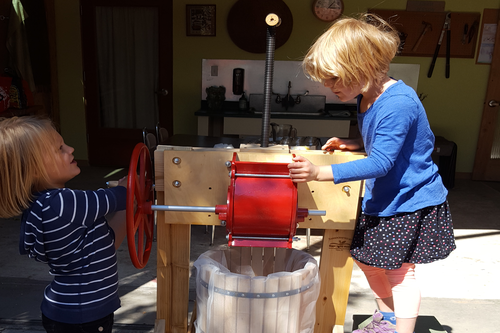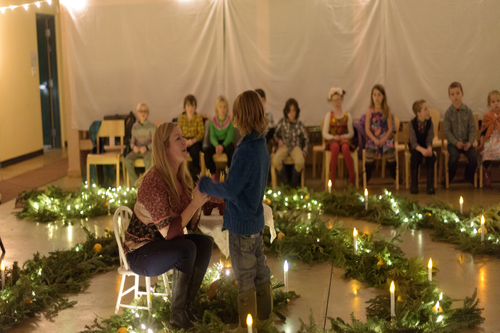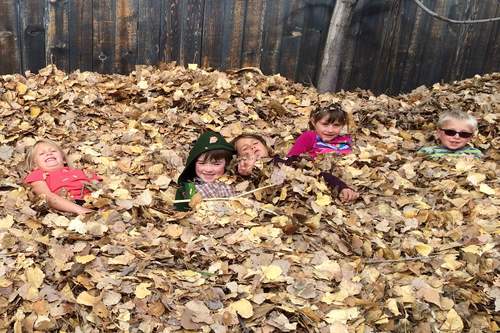First grade is an introduction into the grades classes from kindergarten.
In 1st grade, we emphasize:
Multisensory experience: Students sculpt, draw, move, listen, imagine and sound out—all ways to engage different learning styles—to stimulate the young mind so that the students become motivated eager learners.
Movement: Children need to move their whole bodies. The 1st grade program is designed to encourage large-scale activity and play.
Good habits: Students establish good habits of classroom life and work that will form the basis for all subsequent learning at school.
Principles of form: Behind all forms lie two basic principles: the straight and the curved line. The children find these shapes in their own bodies, in the classroom, and in the world beyond. The straight and curved line are then practiced through walking, drawing in the air and sand, on the blackboard, and finally, on paper. These form drawings train motor skills, awaken the children’s powers of observation, and provide a foundation for the introduction of the alphabet.
Relationships: The students and teacher build the foundation for an ever-deepening relationship while forming a socially cohesive group during this special year of “beginnings.”
Pictorial thinking: Much learning is orchestrated through rich, imaginative pictures, activities, and imitations, which lay the groundwork for future critical and conceptual thinking.
The 1st grade curriculum includes:
Math: Qualities of numbers; introduction to the four operations of arithmetic; geometric forms; whole number processes; counting rhythms; times tables 2 through 6; number bonds
Literature & Grammar: Pictorial and phonetic introduction to the alphabet; word recognition; writing; poetry recitation; Fairy and folk tales from around the world: selected Grimm’s fairy tales, some Hans Christian Anderson and Russian fairy tales late in the year
Science: Nature stories; nature walks; observations; gardening; local environment; seasons; animals
Music and Performing Arts: Singing games; interval and/or pentatonic flutes/recorders (developing finger coordination, concentration, breath control); songs based on seasonal themes; in-class drama based on curriculum
Art: Form drawing; wet-on-wet watercolor painting (emphasizing an experience of working with color rather than creating formed pictures); beeswax modeling; crayon illustrations
World Language: Introduction to Spanish through plays, songs, rhythms, poems and games
Handwork: Knitting with two needles (promotes eye-hand coordination, fine motor skills, and arithmetic skills, sequencing, patience, perseverance and self-esteem); seasonal crafts
History & Social Studies: Fairy & folk tales, rhymes; poems; songs
Geography: Spatial orientation; body geography
Physical Education: Circle games, singing games, and outdoor time



